Understanding The Different Types Of Office Desks
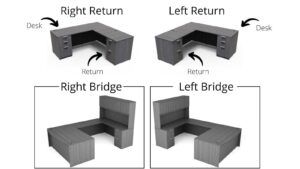
When ordering a desk for your office, it is important to be familiar with the office furniture terminology to ensure your desk will fit your needs and look great in your office. For this reason, we have put together the following comprehensive post to catch you up to speed on your office furniture lingo for your next office furniture purchase.
Pedestals (Peds for short)
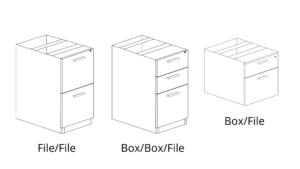
You may have heard the term pedestal when thinking of an object that someone stands on to be heard in a crowd. However, in the office furniture industry, a pedestal is actually referencing the drawer systems that fit underneath a desk or work surface.
These drawer systems can consist of a variety of different-sized drawers. The most common are the Box (6 inch tall) drawer and the File (12 inch tall) drawer. Box drawers are typically used to store small items and are often referred to as pencil drawers. The file drawer is aptly named for its purpose of holding files. These drawer systems are combined to create a couple of different styles.
The three most common are Box/Box/File (BBF), File/File (FF), and Box/File (BF) pedestals. Picking the right pedestals for a corporate office can be difficult – Capital Choice Office Furniture in Columbus, Ohio is available to help guide, answer questions, and create a free 3D of your office to steer you in the right direction!
The Different Type Of Desks
Moving on to the topic at hand, let’s go over some different desk styles.
Straight Desks
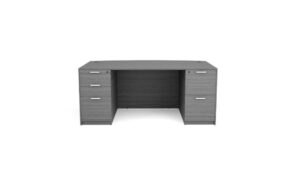
A straight desk is your typical desk. It can have up to two drawers in the various styles noted above. The most common orientation is to have a FF and BBF ped in a straight office desk, though some people prefer to have two BBF peds since we have less need for file space in today’s world.
L-Desks
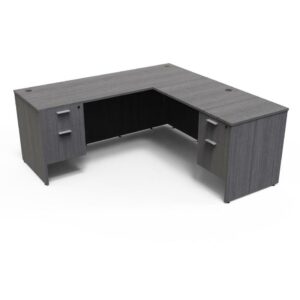
What exactly is an L-Desk? An L-Desk consists of a straight desk along with a desk return.
Desk Return: A desk that is dependent on another desk for support. It has an open end meant to allow for leg space under a desk. There is a difference between left and right returns.
L-desks are shaped, you guessed it, like an L. There are two different orientations for an L-desk a left and a right. The left L-desk has the return on the left side of the desk, and the right L-desk has the return on the right. Many people do not realize the difference between the two types of L-desks, but when designing an office, L-Desk orientation is a vital component. It is common practice to position the desk facing toward the doorway and position the return on the wall opposite the door. This creates a fluid walkway from the door to the sitting area of the L-desk.
The diagram below shows an optimal set-up of an L-desk in an office format.
|
Correct |
Incorrect |
|
|
|
|
|
|
The room above has a door on the top left. Using the rule above, the correct orientation for the L-desk is to have a right return on the opposite side of the room. It is obvious that this is the correct choice for the flow of the room based on the diagram. With the right return, there is space for guest seating and a straight walkway for the occupant to have easy access to their desk.
U-Desks
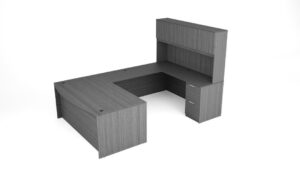
U-Desks consist of a straight desk, bridge unite, and credenza. Desks are typically 30 inches or 36 inches deep while bridges and credenzas are a standard 24 inches deep. Used and new U-desks also typically come with an overhead hutch unit on the credenza. U-desks also have a right and left orientation. Right and left U-desks are determined by the connecting bridge. The same choices that are made to determine the direction of an L-desk are also used for a U-desk.
|
Correct |
Blocked Window |
No Entrance |
|
|
|
|
The office above has a doorway and window on the left side of the room. Using the rule from above for the L-desks, we know that the bridge of the U-desk needs to be opposite of the door and consequently on the left side of the desk. This is also known as a left handed U-desk. The correct orientation shows the room with a left handed U-desk and the two incorrect orientations show the consequences of ordering a right handed U-desk instead.
Choosing The Right Desk For Your Office Environment
We hope that you will find use from this crash course in desk terminology. One of the biggest mistakes we often see in office furniture projects is due to purchasing an L or U desk in the wrong direction for the flow of the room it is going in. It is always recommended to work with an office design professional before ordering a desk to ensure the desk orientation fits best with the room.
Need help with the direction of your desk, choosing the right desk, or have questions about our office design project offerings? Contact Capital Choice Office Furniture today for $100 off your office design project and for a free 3D drawing of your office!
By: Phillip DiSilvestri with Capital Choice Office Furniture
—
Now Get $100 Off Your Office Design Project. Claim Now & De-Stress Your Project By Filling Out The Form ->
